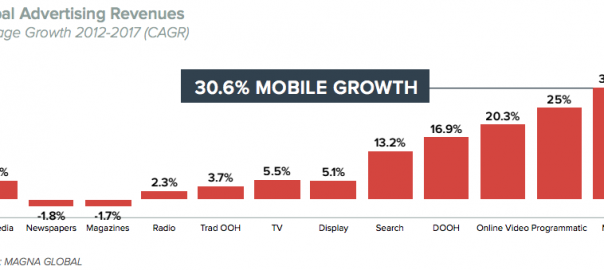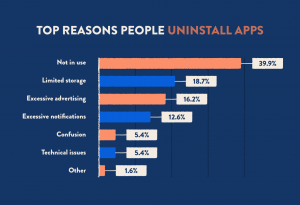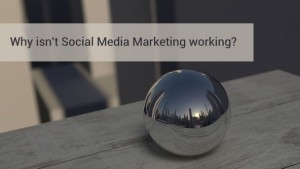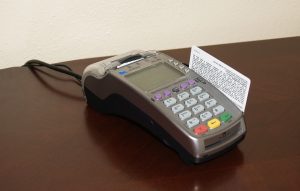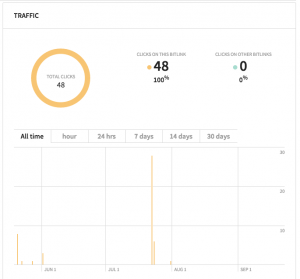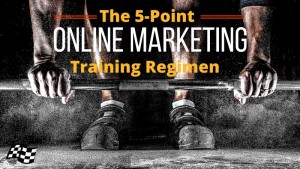Back in 2010, business outlets reeled when Steve Jobs observed that mobile ads suck. He was correct. Data showed that 88% of users ignore ads in apps, 86% ignore mobile web ads, and 79% believe that mobile ads are intrusive. There was definitely room for improvement.

Today mobile ads are one of the most profitable forms of advertising, overshadowing TV, Online Video, and even organic search. The benefit to advertisers is clear–58% of American adults have a smartphone in their pocket to check each day.
Steve passed away before he could weigh in on the new age of mobile ads in 2015. Now that the potential of mobile is one of the hottest topics in tech, what advertising insights have we gained in the past 5 years?
Build “Bottom Up” for Mobile
The chief creative innovation officer at J. Walter Thompson once described mobile as “the bridesmaid and never the bride.” Mobile ads historically weren’t built with native user experiences in mind: they were often poorly sized, interruptive, unhelpful, and brought you pages not optimized for mobile. The small screen doesn’t lend itself to a theatrical show, and that lack of gravity made mobile a low priority. Porting desktop ads to mobile users was a common practice.
Succeeding with mobile ads means realizing that you cannot use the same desktop creative strategy. Think mobile-first. You’re no longer dealing with clicks; mobile users pinch, zoom, swipe, scroll, shake, and speak. The first thing you should consider is how to leverage those actions in advertising. Criteo president Greg Coleman remarked that businesses are waiting for creatives with “mobile in their DNA.”
Provide Contextual Content
We’ve all seen the classic desktop ad that touts “singles in your area” with a city name based on your IP address. Now that we have the technology to literally find singles in our area, why do only 20% of consumers feel that mobile ads are relevant to them?
Start using location-based mobile ads to increase relevancy. Tinder’s latest features make great use of location to entice users when they visit new locations. Consider the power of an ad that shows nearby deals when a user goes to the mall. Or a price reduction on hotel rooms when visiting a city for the first time. Bad ads will offer food when you’re running to catch the bus. Good ads will offer food during your layover at the airport.
Mobile ads have the biggest influence on purchase intent: 38.7% of smartphone users, 30% of PC users, 23% of tablet users are swayed by creatives. Ad influence increases when there’s time/space pressure involved. Optimize your advertising around exclusivity. Ensure the user can only get the product in that moment. This also means you should reduce the amount of ads you deliver. It may seem ironic that reducing ads makes them more successful, but a user is more likely to pounce on a weekly offer than an hourly offer.
Offer Utility to the Consumer
Advertising is most effective when it provides a solution for the customer. It’s called mobile because the user is on the go; advertisements need to be in tune with where the user plans to be and not a distraction on the way. Customers may not remember the brand that offers 10% off cakes, but they will remember the brand that reminds them of birthdays that week. Mobile grants you high-level access to the way people live their lives. It leaves a good impression to be a servant rather than a salesperson. Remember: only 16% of customers will give apps another shot.
At the end of the day, users have smartphones to accomplish goals. Mobile advertising is quickly transitioning from print-era promotions to concierge utility. When Steve Jobs said that mobile ads sucked, it’s because he knew that phones had more to offer than static banner ads. Begin designing creatives that delight your customer. The sales will speak for itself.
To roundup:
- The majority of mobile users ignore traditional ads that take place on their mobile devices. You cannot make a successful ad without thinking outside of the box in terms of device, user experience, and utility.
- Mobile devices have the advantage of being within the customer’s context, increasing their purchase intent. Take advantage of the technology to offer location-based products or special deals in that moment.
- Customers are now quite tired of promotional ads, and the new wave of ads are now about offering utility. Help your customers accomplish something to increase chances of a sale.
(341)
